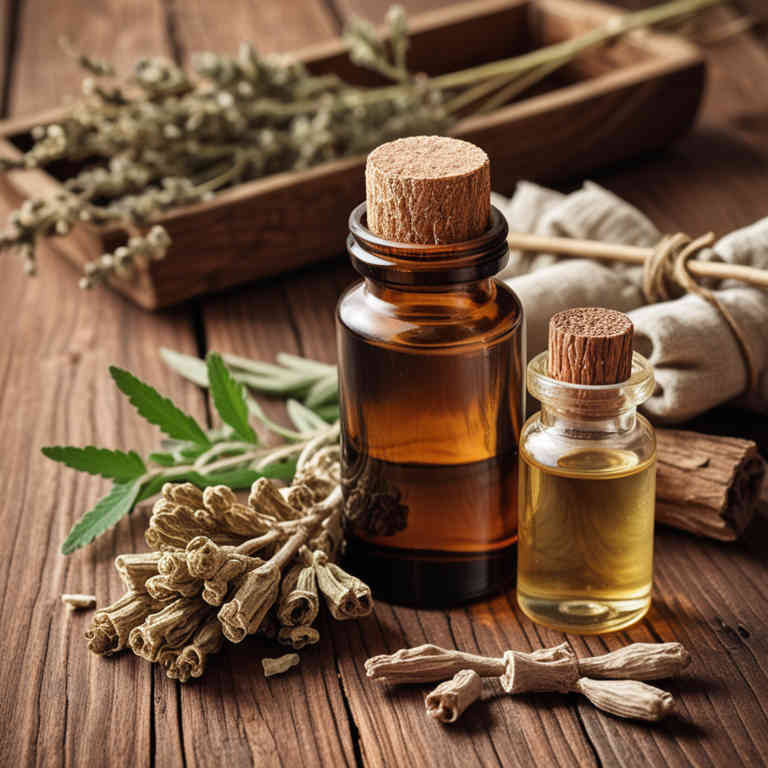Glycyrrhiza glabra essential oil for medicinal use

Glycyrrhiza glabra essential oil is derived from the root of the licorice plant, known for its rich aromatic profile and therapeutic properties.
It is commonly used in herbalism for its anti-inflammatory, antiviral, and expectorant qualities. This oil is often incorporated into respiratory treatments to help alleviate coughs and congestion. It may also support digestive health and is used in skin care for its soothing effects.
Due to its potency, it is typically diluted before use in topical applications or aromatherapy.
Uses
Glycyrrhiza glabra essential oil has been used to treat a variety of ailments for centuries, with its roots in traditional Chinese and Ayurvedic medicine.
Historically, it was valued for its anti-inflammatory and expectorant properties, often used to alleviate respiratory conditions such as coughs and bronchitis. In modern times, it is utilized in aromatherapy and complementary medicine for its potential to reduce stress and support digestive health. The oil is also found in some pharmaceutical formulations due to its glycyrrhizin content, which has demonstrated antiviral and immunomodulatory effects.
However, prolonged use can lead to side effects such as hypertension, highlighting the importance of proper usage under professional guidance.
Benefits
Glycyrrhiza glabra essential oil has health benefits such as anti-inflammatory, antiviral, and antimicrobial properties.
It is commonly used to support respiratory health by helping to relieve symptoms of coughs and sore throats. The oil may also aid in reducing stress and anxiety due to its calming effects on the nervous system. Additionally, it has shown potential in skin healing and as a natural remedy for digestive issues.
However, long-term use should be monitored due to its potential to increase blood pressure.
Constituents
Glycyrrhiza glabra essential oil active constituents include glycyrrhizin, flavonoids, and various volatile compounds such as linalool and limonene.
These components contribute to the oil's anti-inflammatory, antiviral, and bronchodilatory properties. Glycyrrhizin, a triterpene glycoside, is particularly noted for its ability to modulate the immune system and reduce inflammation. The flavonoids present in the oil may support cardiovascular health and act as antioxidants.
Overall, these active constituents make Glycyrrhiza glabra essential oil a valuable preparation for addressing respiratory and immune-related health concerns.
Preparation
To make Glycyrrhiza glabra essential oil, first gather fresh or dried Glycyrrhiza glabra (licorice) roots.
Next, place the roots in a glass jar and cover them completely with a high-quality carrier oil, such as jojoba or coconut oil. Allow the mixture to infuse in a cool, dark place for 4 to 6 weeks, shaking the jar gently every few days. After the infusion period, strain the oil through a fine mesh strainer or cheesecloth to remove the plant material.
Store the essential oil in a dark glass bottle away from light and heat to preserve its potency.
Side Effects
Glycyrrhiza glabra essential oil may lead to increased blood pressure, electrolyte imbalances, and adrenal gland stimulation due to its high content of glycyrrhizin.
Prolonged use can cause pseudoaldosteronism, which results in symptoms like fluid retention, low potassium levels, and hypertension. It may also interact with certain medications, such as diuretics and corticosteroids, increasing the risk of adverse effects. Individuals with hypertension, cardiovascular disease, or kidney disorders should use this essential oil with caution.
High doses or long-term use can potentially lead to more severe health complications, including heart failure or metabolic disturbances.